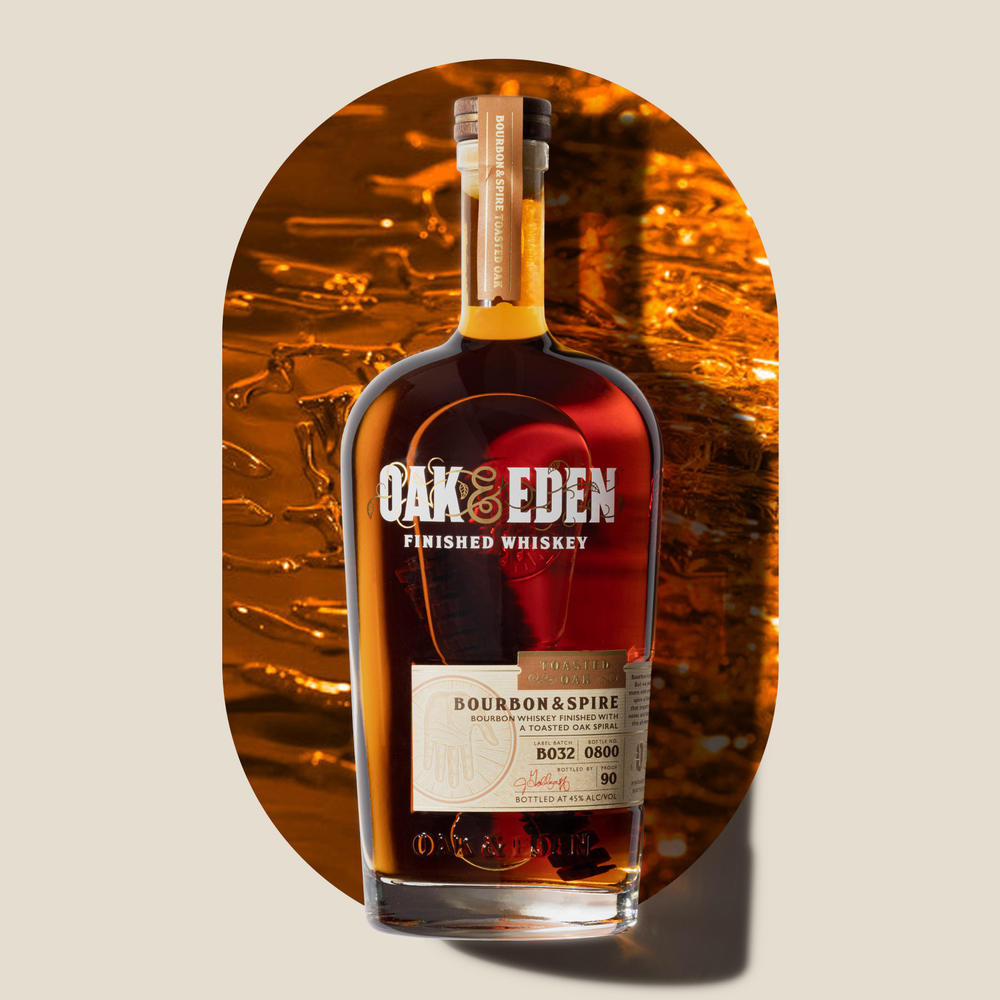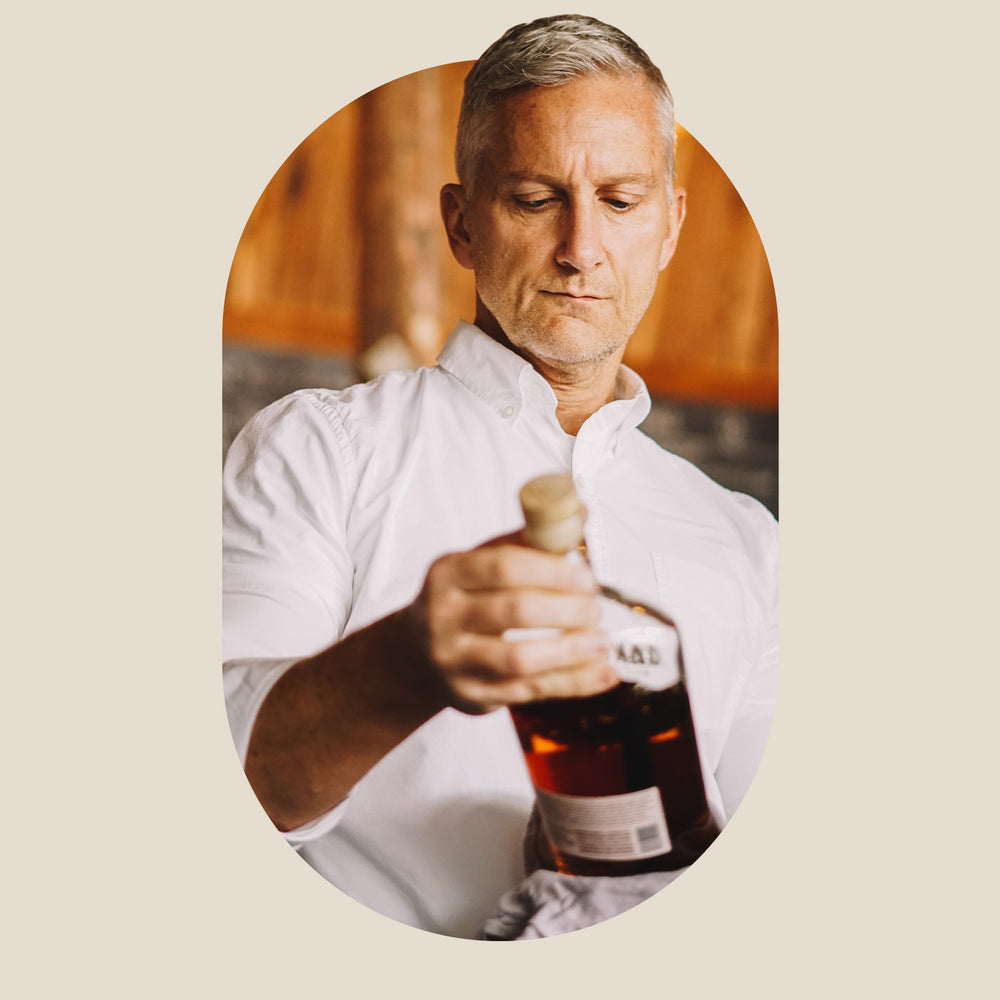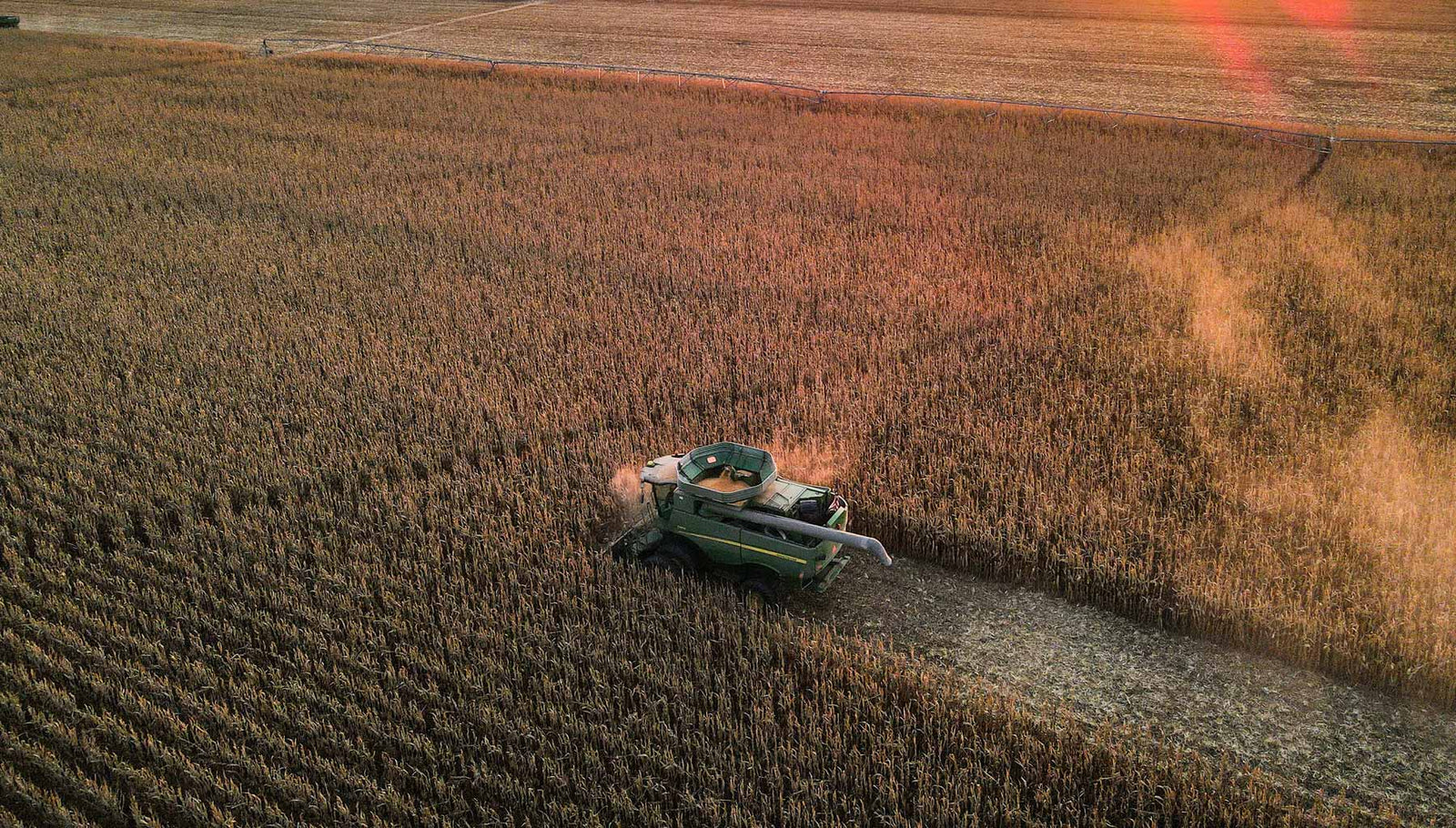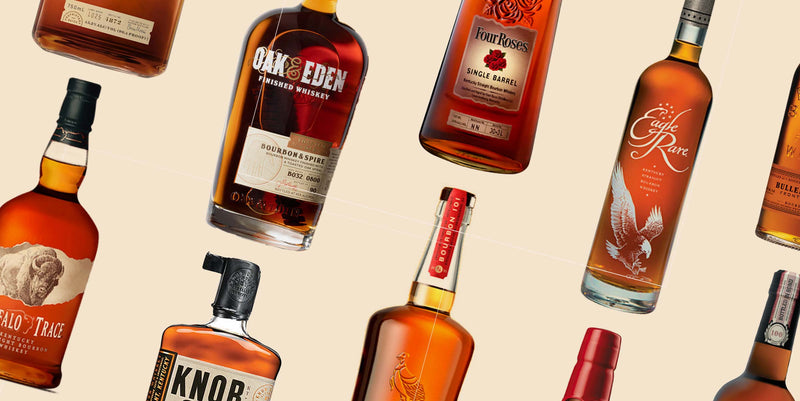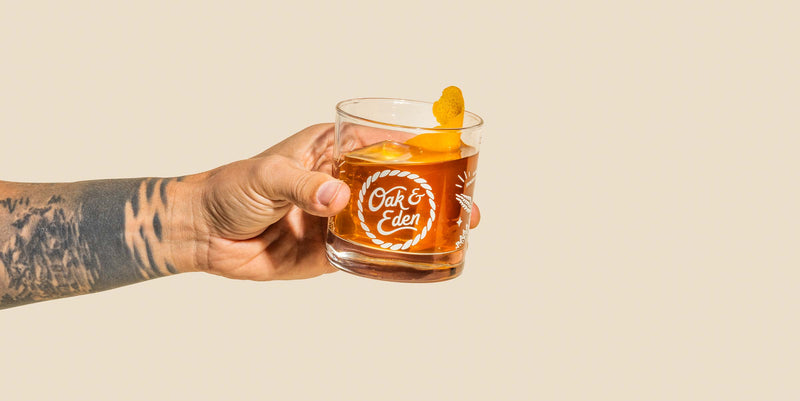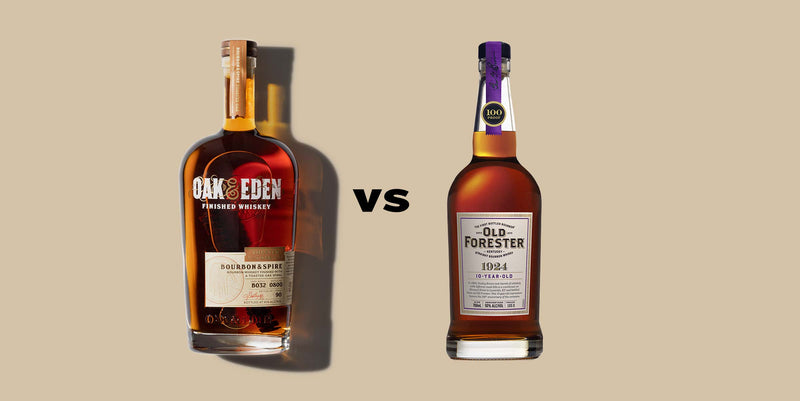What Is Bourbon Made From?
Bourbon is the most American of all the liquors and spirits in the world. But is America’s native spirit really any more special than other alcoholic beverages? What is it that makes bourbon special? And what exactly is it made from?
If you want to know what bourbon is made of, you’re in the right place. We’ve compiled all of our bourbon knowledge to give you a complete guide on one of the best kinds of whiskey anywhere in the world.
What Is Whiskey?
Before we dive into bourbon, we need to cover a few basics about whiskey itself. Unlike bourbon, whiskey isn’t a distinctive product of the United States.
There are several different types of whiskey, all of which have unique elements and requirements, but at their core, they all share a few key characteristics. Whiskey is a distilled spirit made from distilled cereal grains, commonly corn, wheat, barley, and rye.
Whiskey is hard liquor and is at least 40% alcohol by volume ( ABV). Whiskey is usually aged in wooden barrels, often for years, before bottling and consumption. Whiskey is anywhere from pale amber to deep brown in color, depending on the aging process and grains used.
What Is Bourbon?
Bourbon is a specific type of whiskey that originated in Bourbon County, Kentucky. Nowadays, straight bourbon can be found anywhere in the United States but must be from Kentucky to be labeled as Kentucky bourbon.
Bourbon must also be made with a sour mash bill of at least 51 percent corn, with the rest being made from a combination of additives which commonly include wheat, malted barley, and rye. This iconic American whiskey has the caramel and vanilla flavor profile that America has grown famous for.
Some of the most popular bourbon producers in the U.S. today include Jim Beam, Maker’s Mark, Four Roses, Town Branch, Buffalo Trace, Wild Turkey, and Woodford Reserve. While Jack Daniels is a renowned Tennessee whiskey, it’s technically not bourbon.
How Is Bourbon Made?
The whiskey-making process is quite varied around the globe, depending on the country of origin and the type of whiskey being made. Bourbon is one of the most highly regulated whiskeys in the world, with the steps of the process closely monitored for quality and consistency across bourbons.
Here is an in-depth look at how the liquor is made at bourbon distilleries and what makes it so delicious.
Step One: Selecting and Mashing the Grains
The first step of the bourbon-making process is the selection of the grains. The mixture of grains used in bourbon is the first of many regulated aspects of the process. All bourbons must be made with a mash bill containing at least 51% corn.
The other 49% of grains can be made up of more corn, rye, barley, or wheat, depending on the specific distillers' recipe. Each distiller tends to have its own specific blends, using grains carefully sourced from around the United States and the world at large for the best and most specific flavor profiles possible.
Once the mash bill is prepared, the grains are ground up very fine and then added to a large vat where it is combined with hot water to create a porridge-like substance, which is called the mash. This whole process is called “mashing” and helps to release the sugars in the grains before fermentation.
Step Two: Fermenting the Grains
The next step of the bourbon-making process is the fermentation and maturation of the grains. This is the process that actually produces the alcohol that is in our favorite spirit.
The mash is placed into a new tub or tank, where yeast is introduced. This yeast then feeds on the sugars that were released during the mashing process, which has the byproduct of producing alcohol.
The fermentation process for straight bourbon whiskey takes anywhere from 48 hours to 96 hours, depending on factors like temperature, humidity, type of grains, and type of yeast used for fermentation. When fermentation is complete, the mash will reach 7-10% ABV, at which point it can be called the distiller’s beer.
Step Four: Distillation
The next, and perhaps one of the most important steps of bourbon production, is distillation. Distillation is the process of purifying and increasing the alcohol content of liquor. Distillation was first invented and used in ancient Mesopotamia to produce aromatics and perfumes.
Distillation has been used in whiskey production for over a thousand years, starting in Ireland and Scotland. Bourbon is produced using the column still distillation method, which is a more modern version of distillation than pot distillation (the older method many other kinds of whiskey used).
In a column distiller, the distiller feeds the distillers beer into the column, where it is heated to boiling by the infusion of hot water vapor. This causes the alcohol to vaporize, rising through the column until it hits the first condenser plate.
The condenser plates are metal plates in the column still that alternate up the height of the column. When the alcohol vapors reach the plates, they condense back into liquid. From here, the vapors are redistilled in a pot called a doubler. Then the rising hot water vapor heats the condensed liquid back into vapor, where it rises to the next plate to repeat the process.
Eventually, the gasses are captured and funneled into the condenser still where the spirit is brought back to its liquid state at around 70% ABV.
Step Five: Aging
From the column still, the spirit then goes into new, charred white oak barrels to be aged for a minimum of two years. The charred new oak casks give bourbon its distinct vanilla notes and sweetness. Using these oak containers is one of the legal requirements for a spirit to be labeled bourbon.
As the whiskey rests in the wooden barrels, the porous wood adds its flavors and aromas to the wood. Over time, this works to purify the whiskey, remove the harsh flavors, and add new and exciting elements to the flavor profile.
If you’re ever wondering how old a specific bottle of bourbon is, you’ll find an age statement on the label. In general, the older the bottle, the rarer it is.
Step Six: Bottling
Once the whiskey has finished aging, it is ready to be bottled and sold for consumption. Many distillers will mix many barrels of whiskey together before bottling to create uniformity. If a bottle of whiskey contains only whiskey that was aged in one barrel together, then that is called a single barrel whiskey.
Step Seven: In-Bottle Finishing
For most whiskeys and bourbons, the whiskey-making process is complete. But at Oak & Eden, we take things one step further. We use a technology we call in-bottle finishing to add flavors and finishing notes to our whiskey while it sits in its bottle waiting for you to drink.
In every bottle of Oak & Eden whiskey, you will find our patented wooden spires: spiral-cut pieces of wood designed for maximum surface area. These spores are selected, spiced, and prepared precisely for each different blend of Oak & Eden Whiskey to give each bottle and blend the perfect finishing touch.
So What Is Bourbon Made From?
Now that we understand what exactly goes into the bourbon-making process, we can understand a little bit clearer what bourbon is actually made from.
First and foremost, bourbon is made from grains, of which at least 51% needs to be corn. The other grains used can be any combination of barley, rye, or wheat. Bourbon must also be made using column distillation instead of pot distillation, another distillation technique used for other whiskies, like Scotch.
And finally, bourbon must be aged in new oak barrels with char on the inside. While you may not consider the barrel an important ingredient in the bourbon, we certainly do. The wood that whiskey is aged in is where most of the flavor and all of the color of whiskey come from. This means that, by some counts, the barrel is the most important ingredient in any whiskey, not just bourbon.
Is Bourbon More Special Than Other Varieties of Whiskey?
All this commotion about bourbon whiskey may have you starting to feel that bourbon is the pinnacle of whiskey and no other whiskey could compare. But bourbon is just one of the many regional varieties of whiskey throughout the globe.
While bourbon has seen a bit of a global resurgence in recent decades, there are great whiskeys made across all varieties and in all regions of the globe. From smoky Scotch to smooth Irish whiskey, there are plenty of whiskey blends and options for all tastes and flavors.
Here at Oak & Eden, we offer a variety of whiskeys, including bourbon, rye, and wheat whiskey. We also offer some special blends that combine our whiskey with flavors of cold brew coffee and more.
You can learn more about our story and our whiskey here.
What Is Bourbon Made From: Takeaways
Bourbon is the most famous American-made whiskey in the world and is notorious for its balanced, sweet, and warm flavor profile. There are a lot of distinctions that make bourbon unique that all bourbons must meet to legally call themselves bourbon.
Bourbon whiskey must be made with a mash bill of at least 51% corn. Then the whiskey must be made in the United States and distilled using column distillation. From there, the whiskey must be aged in new, charred oak barrels for a minimum of two years before bottling and consumption.
Oak & Eden Whiskey goes through an extra step, which is in-bottle finishing. Our carefully crafted wooden spires add subtle flavor notes to our fully aged whiskeys while they are in the bottle waiting for you to drink. This gives our whiskeys their creamy, smooth, and complex flavors.
Give Oak & Eden whiskey a try and see what difference the spire makes.
Sources:
Coffey still | Whisky Advocate
What is Kentucky Bourbon Whiskey? | BourbonCountry
What's the Difference Between Bourbon and Whiskey? | Food & Wine

